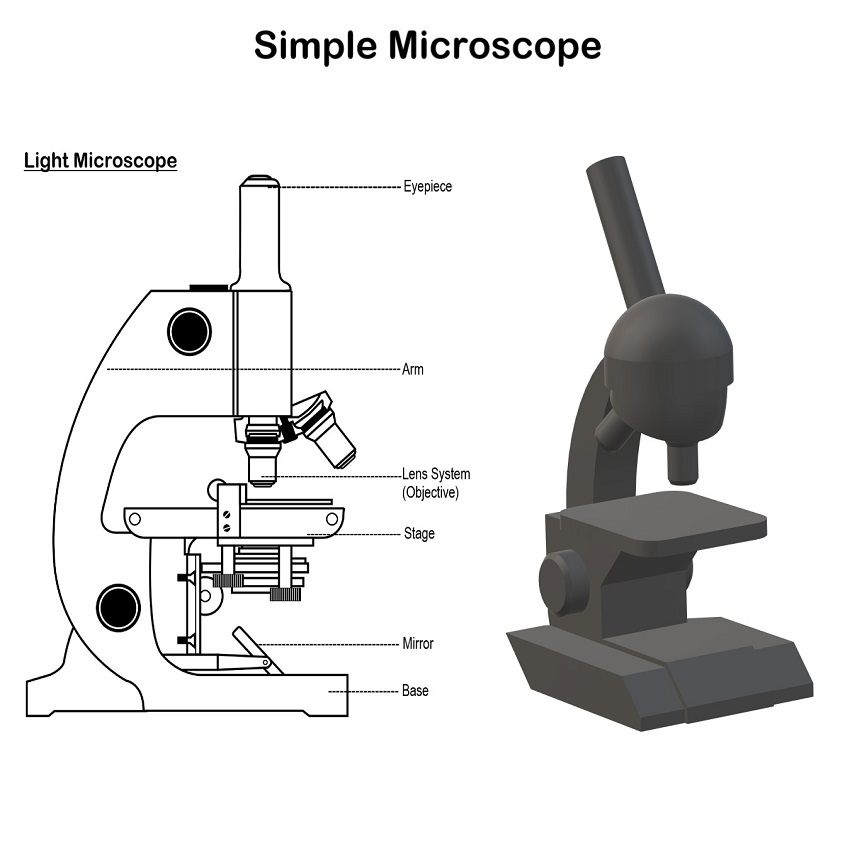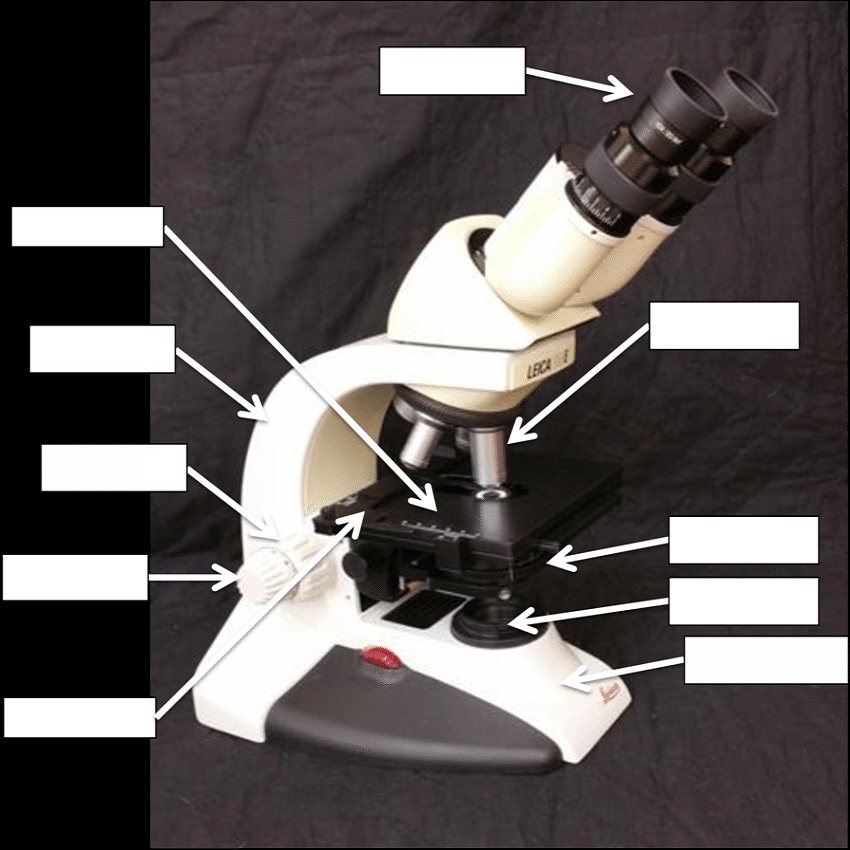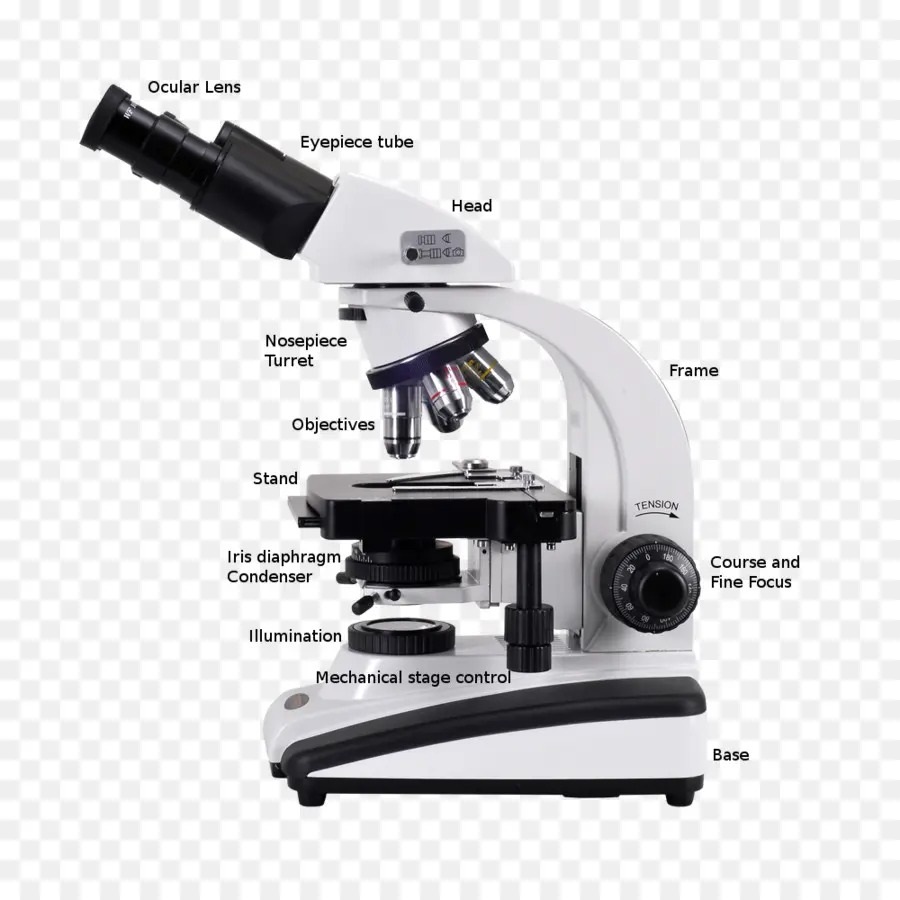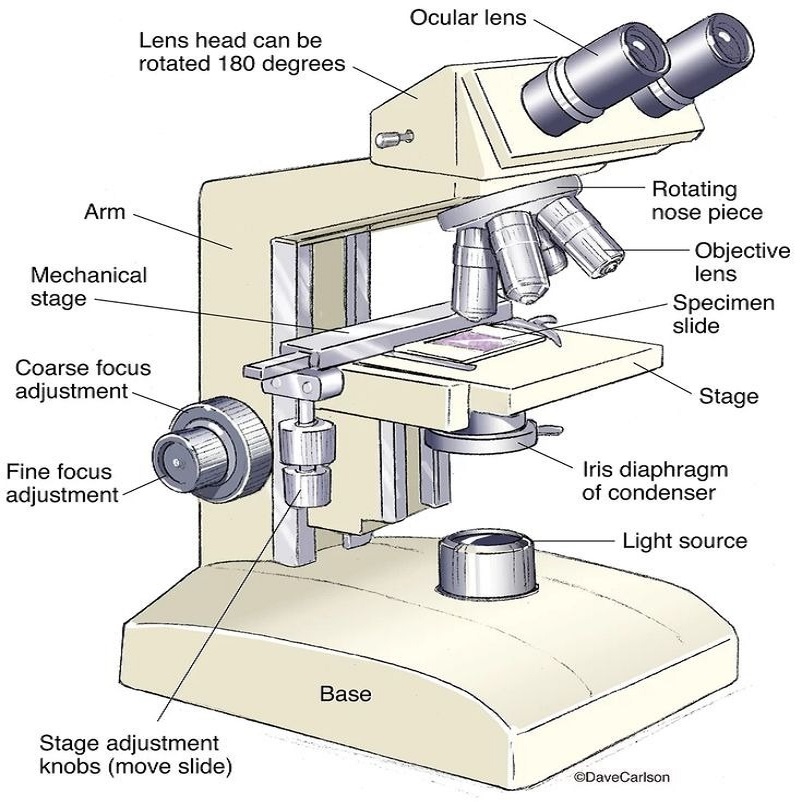Introduction to Labeled Microscopes
When we talk about labeled microscopes, we refer to microscopes with parts that have labels on them. These labels help users identify and use each part correctly. This introduction is crucial, especially for beginners who are just starting in microscopy. Labeled microscopes can be part of educational kits in schools or high-quality instruments in research labs.
Labeled microscopes come with various features designed to assist in learning and research. They often include marked knobs, switches, and slides that indicate their function. This feature can speed up the learning process for students. It also helps professionals avoid errors during delicate lab work. By knowing your tool well, you can focus more on the experiment than on figuring out how the instrument works.
Whether you’re a student, teacher, or scientist, a labeled microscope is a valuable tool. It bridges the knowledge gap and makes microscope use more accessible and efficient. With advancements in technology, there are now more sophisticated labeled microscopes available. These cater to different user levels and fields of study. We will discuss these types and their applications later in this blog.

The Different Types of Labeled Microscopes
Labeled microscopes come in various forms, each with specific features tailored to different users. Let’s explore the primary types you might encounter:
Compound Labeled Microscopes
These are the classic choice for biology classrooms and medical labs. Compound labeled microscopes allow for high magnification. They are ideal for viewing cells, bacteria, and other tiny organisms. Their parts, including the eyepiece, objective lenses, and stage, have clear labels.
Stereo Labeled Microscopes
Also known as dissecting microscopes, these are great for viewing larger samples. Stereo labeled microscopes offer a lower magnification. Users can see 3D images, making them perfect for circuit board inspections or examining geological samples. Labels on the focus knobs and eyepieces guide users effortlessly.
Digital Labeled Microscopes
These microscopes have integrated cameras and connect to a computer for image analysis. Digital labeled microscopes often come with software that further simplifies use. They are used in educational settings as well as for professional documentation.
USB Labeled Microscopes
They are portable and can be connected directly to a USB port on a laptop or tablet. USB labeled microscopes are useful for field studies and quick assessments. Their simple interface, often with labeled buttons and settings, allows for easy operation.
Fluorescence Labeled Microscopes
Fluorescence microscopes use high-intensity light to view samples with fluorescent stains. They are crucial in molecular biology and medical diagnostics. Labeled components help navigate the complex operation process.
Incorporating a labeled microscope into educational or professional settings can significantly enhance learning and accuracy. Each type serves a different purpose and understanding which labeled microscope fits your needs is key to selecting the right one.

Important Features to Consider When Choosing a Labeled Microscope
When selecting a labeled microscope, certain key features deserve careful attention. These factors ensure the microscope not only fits your needs but also offers ease of use and functionality.
Magnification Power
High magnification is vital for studying microorganisms. Consider the maximal magnification level and if it suits your observation needs.
Quality of Optics
Clear, crisp images depend on high-quality lenses. Look for microscopes with superior lens quality to enhance your viewing experience.
Lighting Options
Good illumination is imperative. Some microscopes come with LED lights that offer brightness and longevity.
Ergonomic Design
Comfort during use is crucial. Seek out models with an ergonomic design to reduce strain during long hours of use.
Durability
A robust design ensures the microscope withstands regular use. Opt for a model known for its sturdiness.
Portability
If fieldwork is a regular part of your study, a lightweight and portable microscope is a must.
Ease of Use
Choose a microscope with intuitive labeling. It should allow for quick identification and manipulation of various parts.
Compatibility with Accessories
Look for microscopes that allow attachment of cameras or connection to software for extended capabilities.
Each of these features can play a significant role in the functionality and performance of your labeled microscope. It’s essential to weigh these aspects according to your specific requirements.

Comparing Optical vs. Electron Labeled Microscopes
When exploring the world of labeled microscopes, we must compare the two main types: optical and electron. This comparison will help you understand the fundamental differences, guiding your choice of the labeled microscope best suited for your needs.
Optical Labeled Microscopes
Optical labeled microscopes use light to illuminate samples. They are common in schools and basic research labs. These microscopes often have labels on their eyepieces, objective lenses, and stages. They provide a wide range of magnifications. Optical microscopes are easier to handle and less expensive than electron microscopes.
Electron Labeled Microscopes
Electron labeled microscopes, on the other hand, use beams of electrons. They offer high magnification and resolution. These are vital for viewing structures at a molecular or atomic level. Electron microscopes are more complex and costlier. They require special labels on their parts to aid users given their advanced technology.
Understanding the distinction between optical and electron microscopes is critical. It ensures that professionals and students make an informed decision. These two microscope types cater to different precision levels and fields of study. Your choice should align with your specific scientific needs and the complexity of the tasks at hand.
Applications of Labeled Microscopes in Various Fields
Labeled microscopes are versatile tools essential in many areas of study and professional practice. Their applications span across various fields, significantly impacting research, education, and diagnostics. Here are some of the principal fields where labeled microscopes are indispensable:
Education and Training
In educational settings, labeled microscopes serve as fundamental instruments for teaching biology and other sciences. They help students learn about the different parts of the microscope and their functions. From elementary schools to universities, these microscopes support interactive learning and foster scientific curiosity.
Clinical Laboratories
Medical professionals rely on labeled microscopes for diagnosing diseases. These microscopes assist in identifying pathogens and analyzing tissue samples. Clear labels on their components allow for quick adjustments and precise work, which is critical in medical diagnostics.
Pharmaceutical Research
Pharmaceutical companies use labeled microscopes to study drug interactions at a cellular level. This research helps in developing new medications and understanding their effects. Easy-to-identify parts ensure precision during complex experiments.
Environmental Biology
Field biologists utilize portable labeled microscopes, such as USB microscopes, for onsite sample analysis. These tools aid in studying environmental samples, such as water or soil, directly in their natural settings.
Electronics and Engineering
Engineers and technicians use stereo labeled microscopes to examine electronic components. They are vital for quality control and inspecting intricate parts of circuit boards. Labeled knobs and focus adjustments allow for accurate and efficient work.
Forensic Science
In forensic science, evidence analysis often requires the use of labeled compound and stereo microscopes. These help in examining fibers, residues, and biological samples essential for investigations.
These fields highlight the importance of having labeled components on microscopes. They allow users to operate equipment with confidence, improving accuracy and efficiency in various professional tasks and educational scenarios. Understanding how labeled microscopes apply within your field can steer you towards choosing the most suitable type for your work or study.
Maintenance and Care Tips for Labeled Microscopes
To ensure the longevity and proper functioning of a labeled microscope, maintenance and care are vital. Here are some simple yet essential tips to follow:
- Handle with Care: Always lift the microscope from the base and arm, avoiding contact with the lenses and delicate parts.
- Clean Regularly: Use a soft, lint-free cloth to wipe the exterior. For the lenses, employ lens paper or a specific cleaner to prevent scratches.
- Protect the Labels: Avoid using harsh chemicals near the labels. Clean around them gently to preserve readability.
- Cover When Not in Use: Dust covers are crucial to protect the microscope from airborne particles.
- Store Properly: Keep the microscope in a dry, climate-controlled environment to avoid damage from humidity or extreme temperatures.
- Check the Lighting System: Replace bulbs if necessary and ensure that the lights are functioning correctly for clear observation.
- Regular Inspections: Periodically check all moving parts, such as knobs and slides, to make sure they operate smoothly.
- Consult the Manual: For specific maintenance tasks, refer to the manufacturer’s instructions to avoid mishandling.
- Seek Professional Help: For complex issues, consult with a professional technician rather than attempting DIY repairs.
Following these tips will help you maintain your labeled microscope in top condition, ensuring accurate results and a long service life.
Innovative Advances in Labeled Microscope Technology
The world of microscopy is always evolving with new advances that enhance labeled microscope functionality. As technology progresses, these innovations aim to make research and education more efficient and effective. Below are a few of the latest trends revolutionizing labeled microscope technology:
- Integration with Software: Modern labeled microscopes are now often paired with advanced software. This software helps with data analysis, image capturing, and even remote operation.
- Automated Labeling Systems: Some high-end models come with automatic labeling features. They identify each part of the microscope on a connected display when users switch between different components.
- Improved Lighting Solutions: LED lighting has been a game-changer for labeled microscopes. The latest models offer adjustable intensity and color temperature control, providing optimal illumination for various samples.
- High-Definition Cameras: Digital labeled microscopes now boast HD cameras. These cameras capture detailed images that are essential for in-depth research and analysis.
- Touch Screen Controls: Touch interfaces have made microscopes more user-friendly. They allow users to navigate various functions without the need for excessive dials and knobs.
- Wi-Fi Connectivity: Wi-Fi-enabled labeled microscopes can wirelessly transfer images and data. This makes collaboration easier among scientists and students, regardless of their physical location.
- 3D Imaging Capabilities: Certain stereo labeled microscopes now offer enhanced 3D visualization. This allows for a more realistic view of specimens, which is especially beneficial for educational purposes.
- Portable Designs: With the advent of USB labeled microscopes, portability has improved. These devices are now more compact and can be connected to various devices for fieldwork opportunities.
These advances in labeled microscope technology are breaking new ground. They make the complex world of microscopy more accessible and cater to the growing demands of the scientific community.
Choosing the Right Labeled Microscope for Your Needs
Selecting the perfect labeled microscope requires thoughtful consideration. Think about your specific requirements. Here is how you can choose wisely:
- Assess Your Purpose: Determine what you’ll use the microscope for. Students might need simple models, while scientists may require more advanced features.
- Set Your Budget: Microscopes range in price. Decide how much you’re willing to spend, but remember, quality is paramount.
- Consider Magnification Needs: Ensure the microscope offers the right magnification for your tasks. Higher isn’t always better.
- Evaluate the Labels: The clearer the labels, the easier the operation. Look for microscopes with legible and durable labels.
- Check for Comfort: If you’ll use the microscope often, an ergonomic design can make a big difference.
- Size and Portability Matter: If you’re on the move, a small and lightweight microscope is essential.
- Look for Versatility: Microscopes that allow attaching accessories offer more flexibility for various applications.
- Think about the Future: Opt for a microscope that can grow with your needs. One that accommodates additional lenses or cameras can be a good investment.
Choosing the right labeled microscope doesn’t have to be complicated. Keep these tips in mind and pick the one that suits you best. Remember to weigh each feature against your particular needs to find the ideal match.
